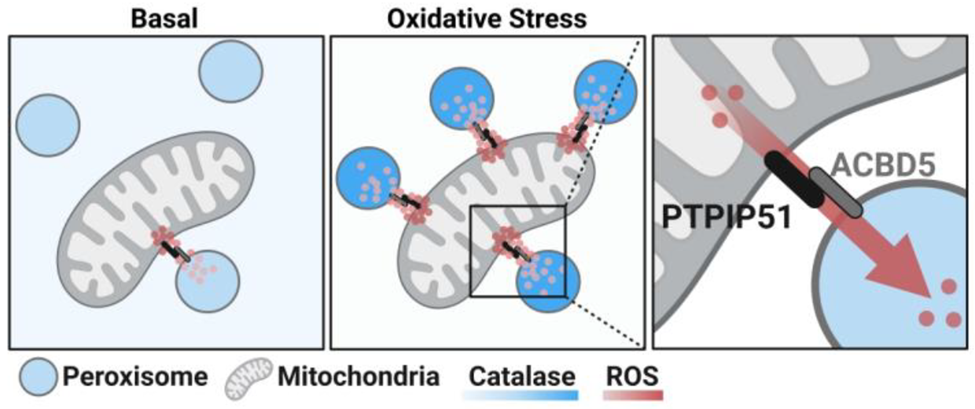
(Toronto/Vienna/Exeter, 11 July 2025) - An international research team led by scientists from SickKids Hospital in Toronto, the Princess Margaret Cancer Centre, Dalhousie University, the University of Exeter (UK) and the Medical University of Vienna has uncovered a previously unknown protective strategy of cells. The study, published in the top journal Science, shows how two cell compartments - mitochondria and peroxisomes - work directly together to defend themselves against so-called "oxidative stress factors".
Oxidative stress occurs when too many reactive oxygen species (ROS) are formed in cells - this happens, for example, during energy production in the mitochondria. These molecules can damage cells and are associated with diseases such as diabetes, Alzheimer's and cardiovascular diseases.
A new protective system becomes visible
The researchers discovered that mitochondria are not on their own when it comes to protecting themselves against ROS. Instead, they can release excess ROS directly to peroxisomes - a kind of "disposal station" within the cell. This occurs via a newly discovered contact point between the two cell compartments.
Two special proteins, PTPIP51 in the mitochondria and ACBD5 in the peroxisomes, form a kind of bridge via which the harmful molecules are passed on. Both proteins are also of interest in connection with neurodegenerative diseases and could enable new therapeutic approaches in the future.
"Until now, it was assumed that each cell compartment solves its own ROS problems," explains Johannes Berger from the Division of Pathobiology of the Nervous System at MedUni Vienna's Center for Brain Research and co-author of the study. "However, our results show that cells have a coordinated defence system that extends beyond the boundaries of individual organelles."
New perspectives for therapies
The findings extend previous assumptions about the effect of antioxidants. Instead of taking general action against ROS, it could make more sense to target specific cell areas such as the peroxisomes.
"As a disturbed ROS balance is associated with many diseases, this discovery opens up new ways in which we could specifically strengthen cellular self-defence," explains Johannes Berger. "This discovery shows how important it is not to look at cell organelles in isolation, but as a coordinated network. This can fundamentally change our understanding of health and disease."
Global team
The research is the result of close international collaboration between experts in cell biology, biochemistry and imaging. In addition to the Medical University of Vienna, the participating institutions are the Hospital for Sick Children, Toronto, the Princess Margaret Cancer Centre (Toronto), Dalhousie University (Halifax) and the University of Exeter (UK).
The project was funded by grants from Canada, Austria and the UK, including the Canadian Institutes of Health Research (CIHR), the Austrian Science Fund (FWF) and the British BBSRC.
Publication: Science
ROS transfer at peroxisome-mitochondria contact regulates mitochondrial redox
Authors: Laura F. DiGiovanni, Prabhsimran K. Khroud, Ruth E. Carmichael, Tina A. Schrader, Shivneet K. Gill, Kyla Germain, Robert Y. Jomphe, Christoph Wiesinger, Maxime Boutry, Maki Kamoshita, Daniel Snider, Garret Stubbings, Rong Hua, Noel Garber, Christian Hacker, Andrew D. Rutenberg, Roman A. Melnyk, Johannes Berger, Michael Schrader, Brian Raught, Peter K. Kim
doi.org/10.1126/science.adn2804
